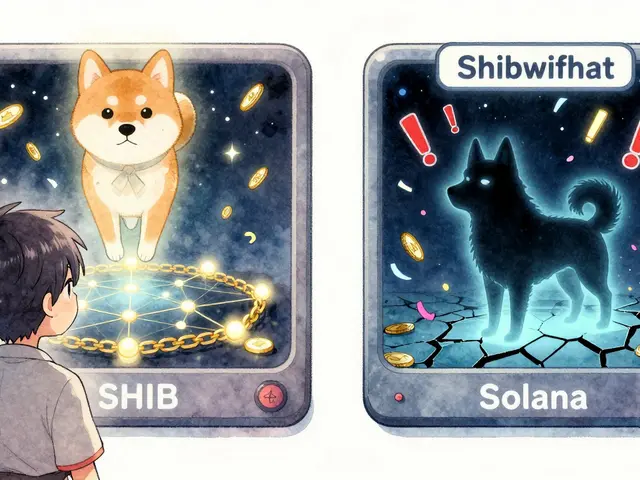Learn what NALA crypto is, its Ethereum and Solana versions, market performance, risks, and how to trade the meme token tied to Instagram star Nala Cat.
Ethereum vs Solana: A Practical Comparison
When working with Ethereum vs Solana, the comparative analysis of two leading Layer 1 blockchains, you need a clear picture of how they differ and where they overlap, it’s easy to feel overwhelmed by the tech talk. Ethereum vs Solana isn’t just a buzzword – it’s a decision point for developers, investors, and anyone curious about where Web3 is heading.
First, let’s look at the base networks. Ethereum, the pioneer smart‑contract platform that runs on a Proof‑of‑Stake (PoS) consensus, prioritises security and decentralisation. In contrast, Solana, a high‑throughput Layer 1 chain using Proof‑of‑History (PoH) combined with Proof‑of‑Stake to boost speed. The two consensus models shape everything else: transaction fees, scalability, and community support.
Key Differences and Shared Foundations
Ethereum and Solana both enable smart contracts, self‑executing code that powers DeFi, NFTs, and dApps, but they do it at very different scales. Ethereum’s gas fees can climb during peak demand, while Solana’s architecture aims for sub‑second finality and near‑zero fees. This contrast creates a classic trade‑off: Ethereum vs Solana often boils down to security versus speed.
Developers choose Ethereum for its massive ecosystem, extensive tooling, and proven track record—think Uniswap, MakerDAO, and a vibrant DeFi landscape. Solana attracts projects that need fast, cheap transactions, such as high‑frequency trading bots and gaming platforms. Because of this, you’ll see a lot of NFTs and gaming apps on Solana, whereas Ethereum hosts most of the legacy DeFi protocols.
From a user perspective, the experience differs too. On Ethereum, wallet interactions may require gas‑price adjustments and occasional patience during congestion. Solana users typically enjoy near‑instant confirmations, but they must be mindful of network outages that have occurred during extreme spikes. Both chains support popular wallets like MetaMask and Phantom, yet each wallet’s UI reflects the underlying network quirks.
Security audits also play a big role. Ethereum’s longer history means many auditors specialize in its Solidity language, and many bugs have been ironed out over years. Solana’s Rust‑based smart contracts are newer, and while the language is praised for safety, the smaller pool of auditors can make thorough reviews harder to find.
When you factor in community governance, another semantic link appears: Ethereum’s on‑chain governance model evolves through EIPs (Ethereum Improvement Proposals), while Solana relies more on off‑chain decisions by its core development team. This difference influences how quickly each network can pivot on upgrades or policy changes.
In practice, many projects adopt a multi‑chain strategy, deploying core contracts on Ethereum for security and secondary features on Solana for speed. This hybrid approach leverages the strengths of both ecosystems and illustrates why the Ethereum vs Solana debate is rarely about choosing one outright.
Below you’ll find a curated set of articles that dive deeper into specific aspects of these blockchains—tokenomics of meme coins on Solana, exchange reviews, regulatory updates, and more. Whether you’re a developer hunting the right platform, an investor weighing risk and reward, or just curious about the current state of Web3, the posts ahead give you concrete data and actionable insights.





